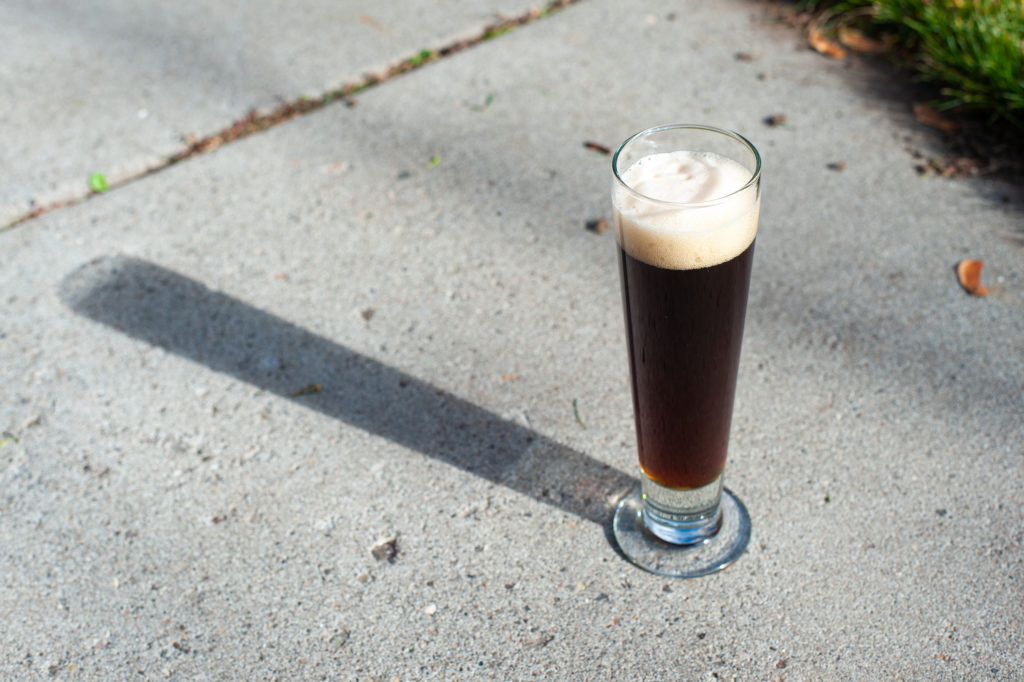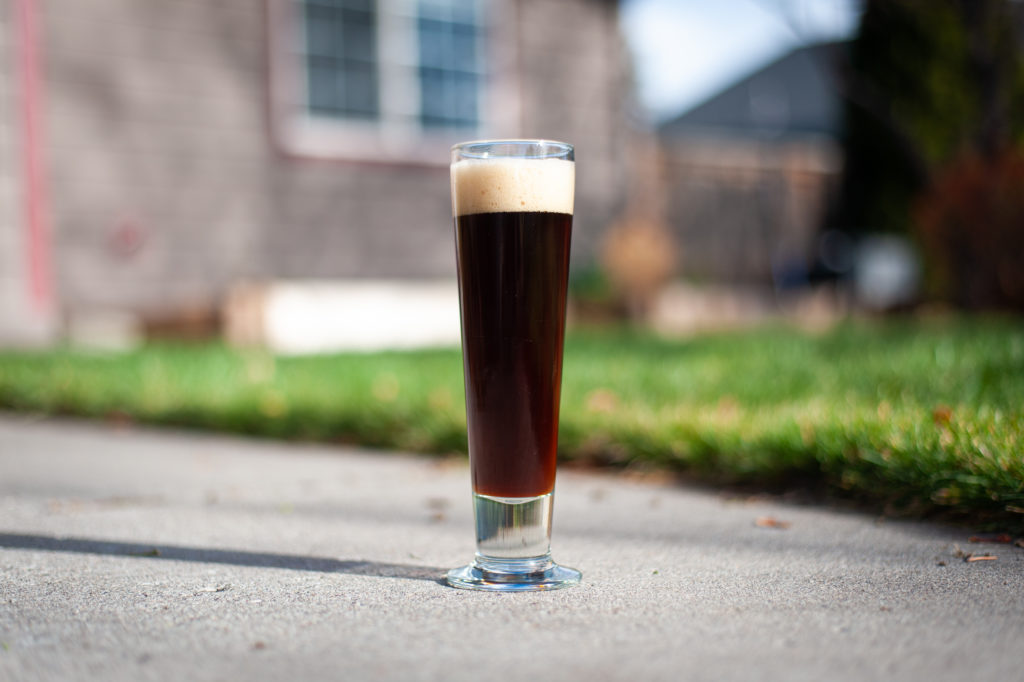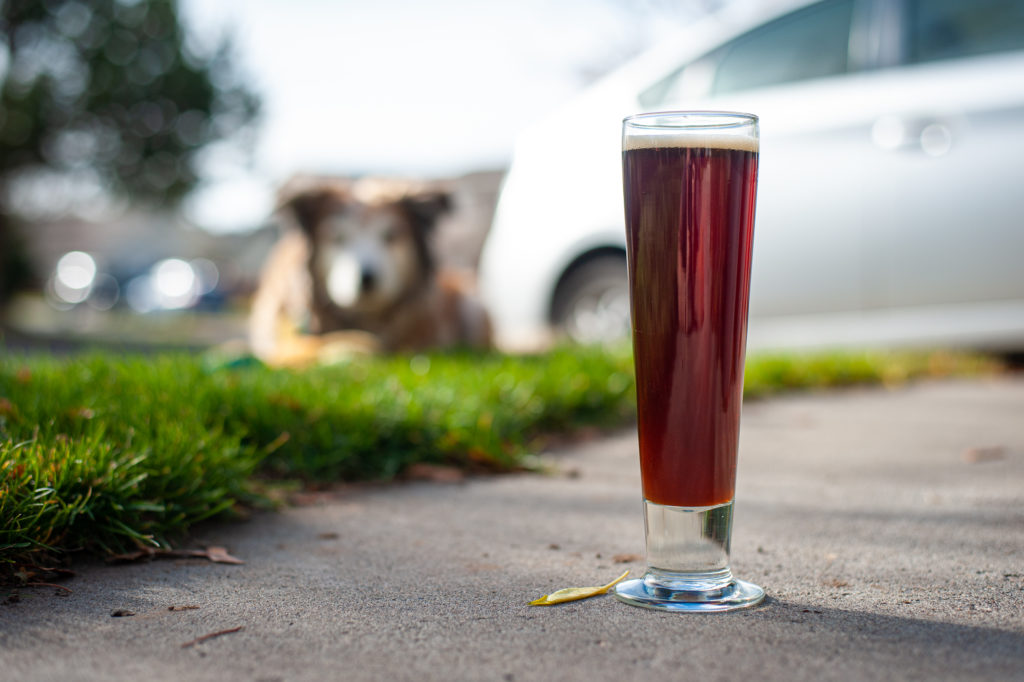Another lager lesson: Schwarzbier

Since I picked up a fermentation fridge this summer, I’ve taken a hard turn toward lagers. Previously I’d tried a few in the winter, leaving the fermenter in my garage, or made pseudo-lagers with kveik. Those beers came out fine—some were even quite good—but even if shortcuts and imprecise methods can produce good beer, there’s something attractive about following age-old brewing practices. Especially when it comes to a style that’s as hard-to-find in the States as schwarzbier.
My guide on this lager journey has been Kai Troester, aka Braukaiser, whose straightforward instructions and baseline recipes have made learning step mashing, decoction, and other formerly arcane techniques really quite simple. That’s not to say I’m anywhere near mastering lager brewing yet, but it’s nice to have a resource like Kai’s wiki to lean on.
All of the beers I’ve made based on Kai’s recipes have been noticeably closer in taste and aroma to the legit German lagers I’ve bought at the store than the beers I was making before, and while I’ve started adjusting them to suit my own preferences, I’d recommend them as a starting point for anyone else interested in lager-making at home.
This schwarzbier, which I named Black Phillip after the delightfully evil goat in The Witch—was my latest loan from Kai’s recipe library. I customized it only to use grain I already had on hand, so if you have the malt he recommends, I’d just brew his version. Since I didn’t have German Caramunich or Carafa Special on hand, I subbed in some Belgian Caramel Munich 40, Midnight Wheat, and a touch of English Pale Chocolate. The rest, including a step mash and decoction mash-out, are right out of the Braukaiser playbook.
What’s in it?
The Vitals
- Name: Black Phillip
- Category: BJCP 8B
- Method: BIAB, full-volume mash
- Batch size: 4 gallons
- Mash: Step mash: 20 mins @ 133F, 45 mins @ 151F, decoction mash-out (1/3 thick, 10 mins)
- Boil: 70 minutes
- Fermentation: 48F for 8 days; 62F for 3 days (d-rest); 32F for 4+ weeks
- OG: 1.056 (13.8 Bx)
- FG: 1.013 (7.2 Bx)
- ABV: 5.8%
- IBU: 24
The Grain
- 5 lbs 6.4 oz BEST Heidelberg Pilsner (73.5%)
- 1 lbs 5.6 oz Weyermann Munich II (18.4%)
- 4 oz Franco-Belges Caramel Munich 40 (3.4%)
- 4 oz Briess Midnight Wheat (3.4%)
- 1.6 oz Crisp Pale Chocolate (1.4%)
The Hops
- 10g Hallertau Magnum [10.8% AA] @ 60 minutes (17.7 IBU)
- 20g Tettnang [3.9% AA] @ 15 minutes (6.3 IBU)
The Rest
- Yeast: Reused cake of Omega Bayern (OYL-114)
- Water: 5.15 gallons Bend tap + 2.9g calcium chloride, 1.8g gypsum, 5g lactic acid 88%
- Presumed Water Profile: Ca2+ 70 | Cl– 74 | SO42- 53 | Mash pH 5.28
» BeerXML Download «
How’d it go?
As I said up top, I opted to go with Kai’s step mash plus decoction mashout regimen for this beer, which obviously added some time and complexity to my brew day. If you don’t want to head over to Kai’s site, here’s what I did: a 20-minute protein rest at 133F, a 45-minute saccharification rest at 151F for 45 minutes, and a 1/3 thick decoction (boiled 15 minutes) to bring the overall mash to 170F for mash-out.
All of that went just fine. I use my 15-gallon stainless kettle on an induction hot plate to do my decoctions, which works well enough when it doesn’t trip the garage breaker. (Which happens probably every other time I try it; this just means I have to stay in the garage while it’s decocting, no biggie.)
In the end, I hit my pre-boil and OG more or less dead on—one point under for the pre-boil and one point over for the OG—chilled the beer to 70F, transferred it into a fermentation keg containing the yeast cake from a recent batch of Munich dunkel, and stuck it in my fermentation chamber, set to 48F.
Fermentation, as you’d expect with a big ol’ cake of live yeast and a relatively high pitch temp, took off almost immediately and was fully chugging along by the following morning. Fermentation was finished within about 5 days, but I gave it a lengthy diacetyl rest before crashing and moving to the keezer to lager.
How’s it taste?

Appearance: I didn’t gelatin-fine this beer, and as with the other beers I’ve made with the Augustiner strain, it never fully cleared. That said, it was a beautiful dark mahogany with ruby highlights and a slightly tan head. As with the Festbier I made following a similar mashing schedule, this beer had a hard time with head retention. You can see it’s got a nice fluffy cap in the photo above, but after a minute or two, it was totally gone. It basically looked like Coca-Cola in the glass.
Aroma: Dark, sweet malts dominated the nose of this one: some light caramel, a little stone fruit, and a hint of coffee-adjacent roasty character, but mostly dark bread. The hops were probably there too, but indistinct and hard to pick out amidst the malt bomb.
Taste: The taste was smoother and less bready than the aroma would suggest, basically exactly what you’d expect/want from a cleanly fermented lager. The hops also came through more clearly in the flavor than they did on the nose, with a solid bitterness that balances the malty flavors and encourages another sip. The roast character, which was quite apparent on the tongue early in the lagering period, definitely smoothed out over the course of the two months it sat in the keezer. As usual, this lager was tasting its best right before the keg kicked.
Mouthfeel: Crisp and generally lager-like, though it had a bit of spritziness that I often get in beers with poor head retention. Not much to say here. Not bad, not notable.
What would I change next time?

I’d really like to try making this beer (or another lager) in a split batch: half with a complex step mash/decoction regimen and half with a standard single-infusion around 152F. My feeling is that the complex mash—perhaps the overall amount of time needed to move through the steps, combined with the slow heating from my 110V electric system—contributed to the head retention and mouthfeel issues I experienced with this beer and the Festbier. I have a feeling that either shortening the mash steps or moving to a single-infusion (or buying a 220V system) would produce a better head.
I’d also like to try making this recipe again with the Weyermann Caramunich and Carafa Special that Kai recommends. My feeling is that they wouldn’t make a huge difference in the quantities used here, but there’s only one way to find out!

This sounds like a great recipe for Hana malt:
https://crispmalt.com/malts/hana-malt/
The maltsters say it is undermodified and benefits from a multi-step mash and decoction. You can hear them discuss it starting at 1:02:50 in this episode of Experimental Brewing (the discussion goes on for several minutes):
https://www.experimentalbrew.com/podcast/episode-141-re-crisping-your-malt
Nice, thanks for the heads up!
I also have some “wind-malted” pils from Mecca Grade that I might try using in the future. 🙂